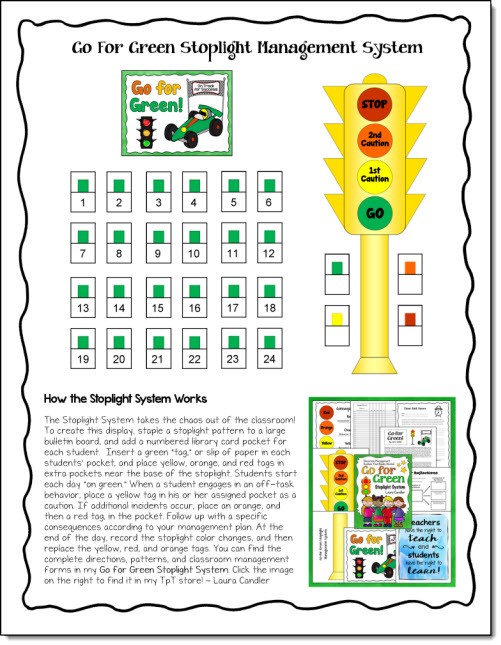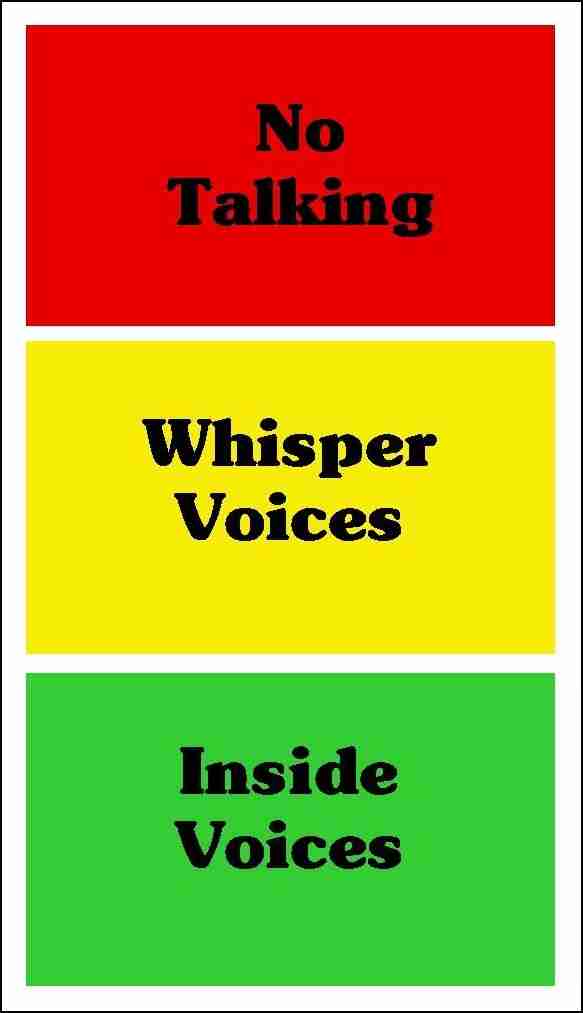 Before you can involve your students in cooperative learning activities or other active engagement lessons, you’ll need to establish clear procedures for whole class management.
Before you can involve your students in cooperative learning activities or other active engagement lessons, you’ll need to establish clear procedures for whole class management.
When effective management strategies are in place, both teachers and students can relax and enjoy the learning environment! Feel free to tweak the strategies below to make them work for you.
Good classroom management is essential to effective cooperative learning. You’ll need to have a clearly defined set of procedures so that the kids know your expectations. Don’t even try to implement the “fun” teambuilders and classbuilders described in the next section unless you have a good grasp of classroom management. Think through every aspect of the day, to include use of restrooms, lining up for lunch, morning routines, dismissal procedures, etc. Ask a veteran teacher for ideas on managing these day-to-day routines effectively.
If you’re going to involve your students actively in your instruction, you’ll need a fool-proof Quiet Signal. You can have a hand signal, a bell, a clicker, or even a rainstick! You need something that can get the students’ attention in 3 to 5 seconds. You also want something that can be used over and over without annoying you or your students.
 My favorite quiet signal is a set of chimes because they sound pleasant but can easily be heard by students. It’s well-worth the investment because these chimes will last you many years! My only problem was sometimes misplacing the mallet, but a friend helped me with that problem by painting the mallet bright blue! If you are interested in ordering a set for your classroom, click hereto find these chimes on Amazon.com.
My favorite quiet signal is a set of chimes because they sound pleasant but can easily be heard by students. It’s well-worth the investment because these chimes will last you many years! My only problem was sometimes misplacing the mallet, but a friend helped me with that problem by painting the mallet bright blue! If you are interested in ordering a set for your classroom, click hereto find these chimes on Amazon.com.
If you teach elementary level students, I recommend using the Stoplight Management System shown below. I used this system with great success for over 10 years. Create your own bulletin board with numbered pockets or purchase Go for Green Stoplight Management System which includes all the patterns and printables needed to put this into action in your classroom.

If you feel your class is too noisy during cooperative learning activities, there are ways to teach them to control their noise level. Just use the Erase-a-Letter technique. Before you start a CL activity, write the word STOP on the board. Teach them how to whisper and how whispering sounds different from regular voices. After that, erase a letter from the word STOP on the board every time you hear anything above a whisper. When they lose all their letters, put an end to the CL activity and immediately move into individual seatwork. Let them know that if they want to do the CL activities they will have to work more quietly. About an hour later (or the next day if you don’t have the kids all day), try another CL activity. If you reinforce this consistently, you’ll find you can really manage the noise level
When students demonstrate a willingness to apply creative thinking strategies or persist in working through a problem, use Brain Bucks to reward their efforts. Of course, you’ll need to back those Brain Bucks with something else so that students can “spend” them in other ways.

 Brain Bucks are just one part of a full classroom economy system that you may want to implement in your classroom. My system consisted of students earning different denominations of money for completing class jobs or doing all of their homework for a week. I had a banker who kept track of who was doing their jobs and paid the rest of the students at the end of the week. The kids saved their money for an auction that we had at the end of each 9 week grading period. You can find the money patterns and a brief description of that system in my Classroom Economy Pack freebie.
Brain Bucks are just one part of a full classroom economy system that you may want to implement in your classroom. My system consisted of students earning different denominations of money for completing class jobs or doing all of their homework for a week. I had a banker who kept track of who was doing their jobs and paid the rest of the students at the end of the week. The kids saved their money for an auction that we had at the end of each 9 week grading period. You can find the money patterns and a brief description of that system in my Classroom Economy Pack freebie.
This simple technique gives students a visual to show your noise level expectations for specific activities.
 Use a large sheet of red, yellow, and green construction paper to simulate each color of a stop light. Write the words on each color as shown in the illustration. (Red – No Talking, Yellow – Whisper Voices, Green – Inside Voices).
Use a large sheet of red, yellow, and green construction paper to simulate each color of a stop light. Write the words on each color as shown in the illustration. (Red – No Talking, Yellow – Whisper Voices, Green – Inside Voices).
Introduce the Work Zone posters and discuss your expectations for different types of activities. Brainstorm situations that might be appropriate for each color. When you post one of the signs, say something like, “Our Work Zone color right now is yellow. You may use whisper voices to discuss how we use math in every day life.” If students don’t respect the Work Zone limits, have them pull a tag on your Stoplight board or use your existing management system. The colors just provide a visual reminder of your expectations. Assign a student to change it when you verbally signal a chance in acceptable noise levels.
Sometimes students get into bad habits like blurting out comments or getting out of their seats without permission. They need something tangible to remind them to follow the classroom procedures. I have found that using raffle tickets helps tremendously. I give students 2 raffle tickets to start the day. They can’t write their names on their tickets until the end of the day. If they break a classroom rule, I take a ticket. If they lose both tickets, the next time they disrupt the class, they have to pull a tag on the Stoplight board (described above). Students can also earn tickets for staying on task or doing excellent work. At the end of the day, I collect all tickets and do a drawing for a small prize, class money, or a treat. Friday is popcorn day – I pop a bag of microwave popcorn and draw out tickets to see who will share the popcorn. I keep the tickets all week and get rid of them Friday afternoon. You might not want to use this all year, but it does help students become aware of the frequency of their disruptive behaviors.